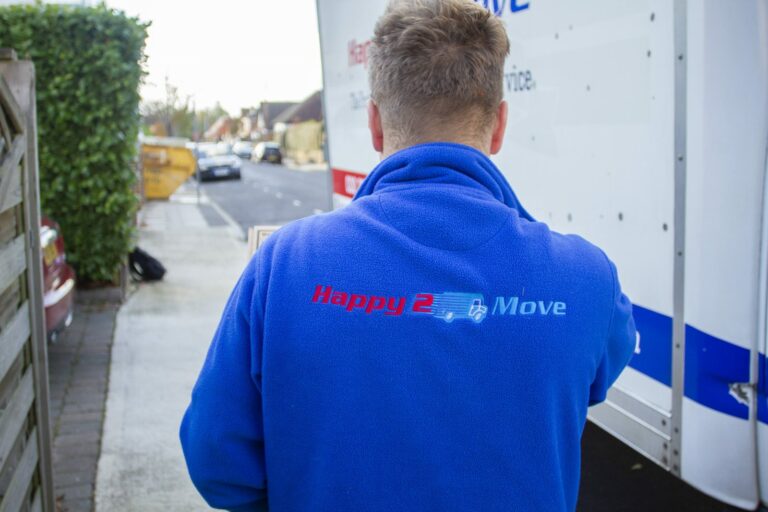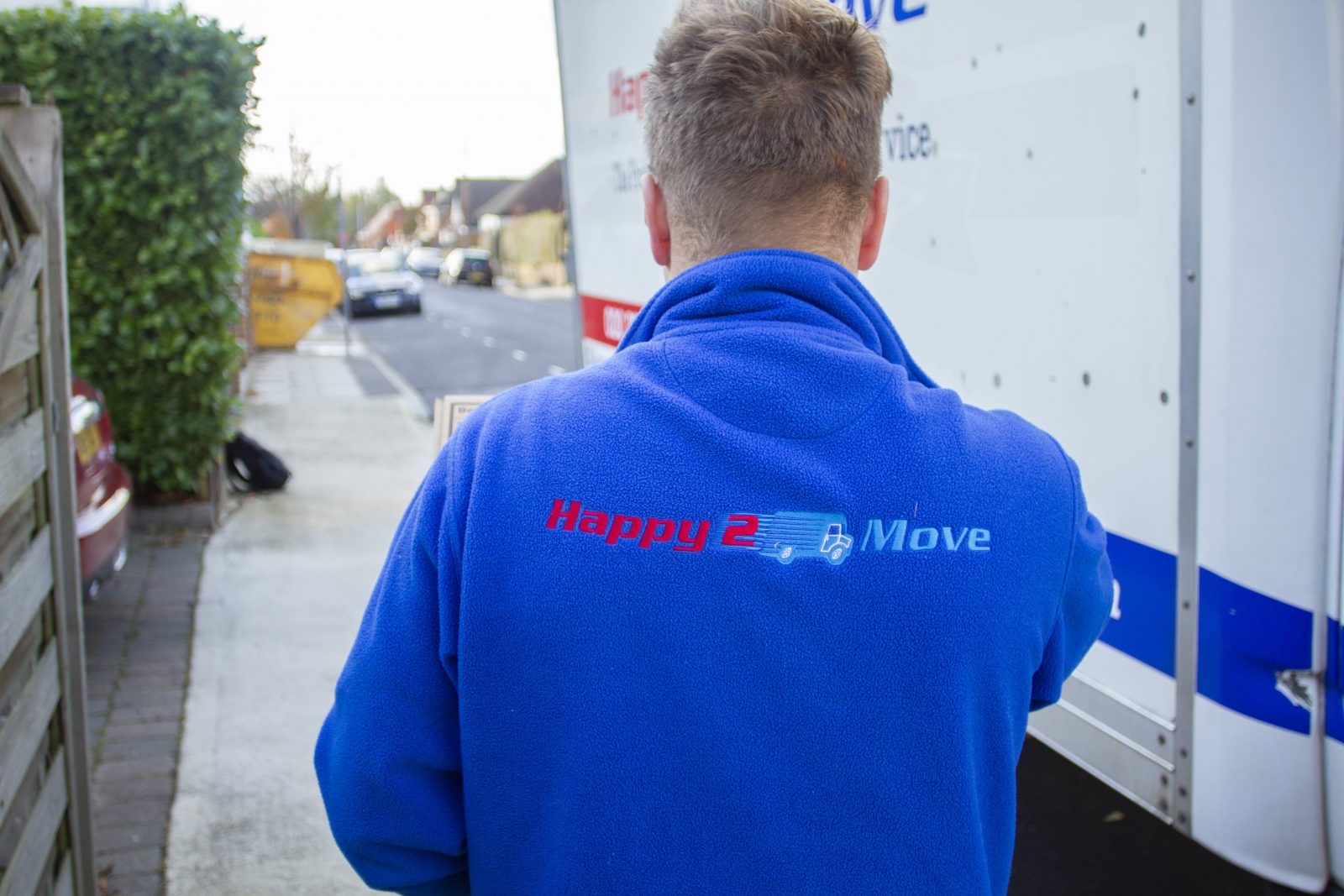
Moving home is rarely a straightforward process. Between property chains, completion dates that shift at the last minute, and the inevitable discoveries of “stuff we didn’t know we had,” there’s a lot to juggle. But here’s something many people don’t realise: strategic use of storage can transform your moving experience from chaotic to controlled.
At Happy2Move, we’ve seen firsthand how clever storage planning can save our clients thousands of pounds, reduce stress, and even help secure better property deals. Here’s how to make storage work for you during your next move.
The Hidden Costs of Poor Moving Timing
Consider Sarah, who had to move out of her rented flat by the end of March, but her new house purchase wouldn’t complete until mid-April. Her options were:
- Pay for two weeks of expensive temporary accommodation whilst storing everything
- Extend her rental agreement (if possible) at penalty rates
- Stay with family whilst paying for emergency storage anyway
- Risk losing her house purchase by trying to delay completion
None of these options were ideal, and all were expensive. This is where strategic storage planning becomes invaluable.
Strategic Storage: Your Secret Weapon

De-cluttering Before You Move
The smartest time to reduce your possessions isn’t after you’ve moved – it’s before. Using storage strategically means you can:
Sort belongings into three categories:
- Items you definitely want in your new home
- Items you’re unsure about but don’t want to throw away
- Items you know you don’t need
Put the middle category into storage. Living in your new home for a few months without these items will clarify whether you actually need them. This approach prevents your new space from becoming cluttered with things you don’t really want.
Stage your home for sale more effectively. Buyers want to see spacious rooms, not your collection of books or family photographs. Temporarily storing personal items and excess furniture can make your property more appealing and potentially increase its value.
Bridging Timing Gaps
Chain delays: Property chains are notoriously unpredictable. Having a storage plan in place means you’re not scrambling for solutions when dates shift.
Renovation overlap: If your new property needs work before you can move in properly, storage allows you to complete the purchase and renovations without living in chaos.
Rental transitions: Particularly common in London, where rental markets move quickly. Storage gives you flexibility to secure the right property rather than settling for something available immediately.
Practical Storage Strategies That Save Money

The Phased Moving Approach
Instead of moving everything in one go, consider a phased approach:
Phase 1: Move non-essential items to storage first. This includes:
- Seasonal items (winter clothes during summer moves)
- Books and decorative items
- Spare furniture
- Kitchen items you don’t use daily
Phase 2: Move daily essentials on completion day. This creates a smaller, more manageable moving day whilst ensuring you have everything you need immediately.
Phase 3: Gradually move stored items to your new home as you settle in and determine what you actually need.
This approach often costs less than a single massive moving day and reduces stress considerably.
Creating Flexibility in Property Negotiations
Having storage sorted gives you negotiating power:
Flexible completion dates: You can accommodate the seller’s preferred timeline, potentially securing a better price or beating other buyers who can’t be flexible.
Chain position: Being able to move quickly or accommodate delays makes you a more attractive buyer in competitive markets.
Rental negotiations: In rental markets, showing you can move flexibly often helps secure better properties or negotiate better terms.
Types of Storage Solutions for Different Scenarios
Short-Term Storage (1-8 weeks)
Perfect for bridging completion gaps or whilst minor renovations are completed.
What to store: Non-essential items, seasonal belongings, and anything that would create clutter during your settling-in period.
Cost consideration: Short-term storage is an investment in your sanity and often costs less than alternative accommodation or rental extensions.
Medium-Term Storage (2-6 months)
Ideal for major renovations, extended property searches, or when downsizing gradually.
Strategic benefit: Allows you to live in your new space and understand what you actually need before bringing everything across.
Renovation advantage: Protects belongings from dust and damage whilst work is completed.
Seasonal Storage Planning
Winter moves: Store summer furniture, garden equipment, and seasonal decorations until spring.
Summer moves: Store winter clothing, heating equipment, and Christmas decorations until needed.
This approach reduces the volume of items to move and unpack immediately, making your new home more liveable sooner.
Maximising Storage Efficiency
Inventory Management
Keep detailed records of what’s in storage. This prevents buying duplicates and helps you retrieve specific items when needed.
Digital photos: Take pictures of stored items and keep them on your phone for easy reference.
Categorised lists: Group similar items together in your inventory.
Priority labelling: Mark boxes with priorities – “need soon,” “seasonal,” or “review later.”
Strategic Packing for Storage
Access planning: Store items you might need first near the storage unit entrance.
Protection priorities: Your most valuable items deserve the best protection and climate-controlled environments.
Space efficiency: Disassemble furniture where possible to maximise space usage and reduce costs.
Working with Professionals
When to Use Professional Storage Services
High-value items: Antiques, artwork, or expensive furniture benefit from professional handling and climate-controlled storage.
Large volumes: If you’re storing entire rooms worth of furniture, professional services often prove more cost-effective than DIY approaches.
Time constraints: When you’re managing a complex move, professional storage services remove one major stress factor.
Choosing the Right Storage Partner
At Happy2Move, our recent recognition as 2024 Packer of the Year reflects our commitment to protecting your belongings throughout the storage process. When selecting storage services, consider:
Comprehensive service: Can they handle packing, transport, storage, and delivery back to your new home?
Flexibility: Do they accommodate changing timelines and requirements?
Security and insurance: Are your belongings properly protected?
Accessibility: Can you access items if needed during storage?
Real-World Storage Success Stories
The Downsizing Advantage
Many of our clients use storage when downsizing, particularly those moving from family homes to smaller properties. Rather than making difficult decisions about belongings whilst dealing with moving stress, they store everything initially, then gradually decide what fits their new lifestyle.
This approach prevents regret about discarded items and allows for thoughtful decisions about what truly matters in their new space.
The Renovation Strategy
Smart homebuyers often purchase properties needing work, then use storage whilst renovations are completed. This approach can save thousands compared to buying move-in ready properties, and storage costs are minimal compared to the savings achieved.
Cost-Benefit Analysis
Storage Costs vs. Alternatives
Emergency accommodation: Often costs £50-100+ per night Rental extensions: Usually at penalty rates Rush decisions: Buying new items because stored ones aren’t accessible Stress costs: The value of peace of mind during major life transitions
Storage costs typically represent a fraction of these alternatives whilst providing significantly more flexibility and control.
Insurance Considerations
Home insurance: Check whether your policy covers items in storage Storage insurance: Professional storage companies often provide comprehensive coverage Valuable items: Consider separate coverage for high-value possessions

Planning Your Storage Strategy
Timeline Development
6-8 weeks before moving: Research storage options and book space 4 weeks before: Begin sorting belongings and arranging storage for non-essentials 2 weeks before: Confirm storage logistics and moving day coordination Moving week: Execute your phased moving plan
Questions to Ask Yourself
- What do I absolutely need in my new home immediately?
- Which items am I unsure about keeping long-term?
- What are my must-have items for the first month in my new home?
- How can storage help me secure a better property deal?
Making Storage Work for Your Situation
For First-Time Buyers
Use storage to bridge rental end dates and purchase completion dates. This flexibility often helps secure better properties and avoid the stress of rushed decisions.
For Growing Families
Store outgrown items rather than discarding them. This proves particularly valuable for children’s furniture and toys that might be needed again.
For Downsizers
Storage provides time to adjust to smaller spaces without the pressure of immediate decisions about lifetime possessions.
For Investors and Developers
Storage enables property improvements without the rush of coordinating multiple moves, often improving final sale prices significantly.
The Bottom Line
Storage isn’t just about finding space for your belongings – it’s about creating flexibility, reducing stress, and often saving money during one of life’s major transitions. By thinking strategically about storage, you can:
- Negotiate better property deals
- Reduce moving day stress
- Make thoughtful decisions about your belongings
- Protect valuable items during transitions
- Create breathing space in your new home
The key is planning ahead and viewing storage as an investment in a smoother, more controlled moving experience. Whether you’re bridging a gap between properties, managing renovations, or simply want to settle gradually into your new space, strategic storage use transforms house moves from chaotic experiences into manageable transitions.
Remember, the goal isn’t just to move your belongings from one place to another – it’s to create the foundation for your new life in your new home. Smart storage planning helps ensure that foundation is built thoughtfully, not hastily.










